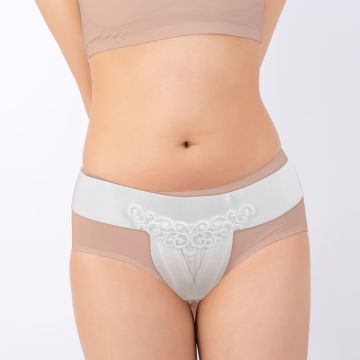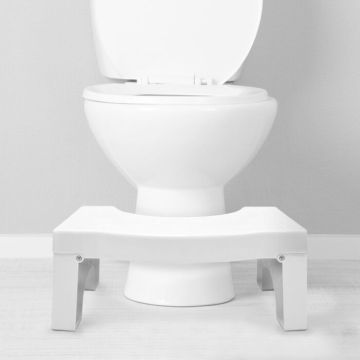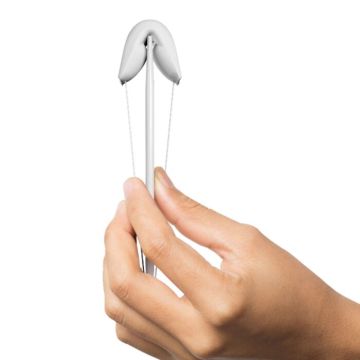SRC Health Restore Incontinence and Prolapse Compression Support Shorts

SRC Health Restore Incontinence and Prolapse Compression Support Shorts
Out of stock
- Free Delivery On Orders Over £50
- 30-Day Money Back Guarantee
- Premium compression and support for stage 1 or 2 stress urinary incontinence & stage 1 uterine or bladder prolapse
- Patented anatomical support panels work in unison to stabilise the pelvis & ensure optimum comfort
- Gives perineum compression to stimulate proprioceptive feedback to pelvic muscles
- Activates & strengthens the pelvic floor muscles, 70% of women recorded an improvement in their SUI score helps the wearer to manage prolapse
- Sweat wicking, breathable fabric for maximum comfort whether day or night
Features & specifications
SRC Health Restore Incontinence and Prolapse Compression Support Shorts
SKU
13730
Brand
SRC Health
Recommended For
Compression and support for Stage 1 and 2 Stress Urinary Incontinences, Stage 1 Uterine Prolapse, Stage 1 Bladder Prolapse (Cystocele)
Sizing
Be measured in your underwear only. Stand with your heels together and have the person measuring you keep the measuring tape straight. They should place the tape over your hips, pubic bone and bottom at the fullest part. The tape should touch. your body at all points but not be pulled tight.
- XXS: 84-88cm / 33-34.5 inches
- XS: 89-93cm / 35-36.5 inches
- S: 94-98cm / 37-38.5 inches
- M: 99-104cm / 39-41 inches
- L: 105-112cm / 41.5-44 inches
- XL: 113-121cm / 44.5-47.5 inches
- XXL: 122-130cm / 48-51 inches
Delivery & returns
Delivery Options
For domestic (United Kingdom) orders we offer 2 delivery options. Any orders that include any Kegel8 toner are shipped free using the Royal Mail 48 service.
|
£5.99 |
|
£3.99 |
For international orders, dependant on territory we offer the following services;
|
|
|
|
|
|
|
Discreet Packaging
As some of our products are of an intimate nature. Rest assured that no one, other than you, will know what is contained in your delivery. We use plain brown, unbranded, boxes. Keeping the contents secure and private.
Returns
If you’re not 100% happy with your purchase you can return it within 90 days of delivery. If the item is faulty/damaged, you’ll receive a FULL refund; however, if the item is unsuitable or you have changed your mind, a small postage charge of £2 will be deducted. Please ensure unwanted items are unopened, unused, and everything is in a re-saleable condition.
Speak to our Customer Care team if you have any questions.
VAT Free information
VAT Exemption/Relief Explained
VAT Exemption provides a valuable benefit for individuals who are chronically sick or disabled. It allows them to purchase eligible items at a 0% VAT rate, thus reducing the cost of these essential items. The process of claiming VAT exemption is made simple, especially when shopping online, as our online store is designed to facilitate the process with a series of straightforward questions that can be answered in the comfort of one’s own home.
Eligibility for VAT Relief
The government has outlined the criteria for eligibility for VAT relief, which include:
- Charities that provide their charity number. Individuals who are considered “chronically sick or disabled” as defined by:
- Having a physical or mental impairment that has a long-term and substantial impact on their ability to carry out everyday activities. Having a condition that is medically treated as a chronic sickness, such as diabetes. Being terminally ill.
It’s important to note that VAT exemption does NOT apply to individuals who are only temporarily disabled or incapacitated, such as those with a broken limb, or frail elderly persons who are otherwise able-bodied.
Proof of Disability
In order to be exempt from VAT, the government requires a simple declaration of the nature of one’s disability at the time of ordering. No proof of the disability needs to be provided to any party. All that is required is the name, address, and disability of the person the item is for, as well as information about their chronic sickness or disability.
Eligible Items
VAT Exemption is only applicable to certain items that have been designed specifically for use by individuals who are chronically sick or disabled. These items include, but are not limited to: bathing aids, mobility aids, toileting aids, continence products, and other daily living aids.
SRC Restore Incontinence and Prolapse Compression Support Shorts have been expertly designed to treat Stage 1 and 2 stress urinary incontinence, as well as stage 1 uterine or bladder prolapse (cystocele). They may also reduce the chance of those suffering with stress urinary incontinence developing pelvic organ prolapse in the future.
Expertly engineered to target the cause rather than the symptoms, this clever compression underwear activates the pelvic floor muscles, strengthening them for long lasting results. In fact, 70% of women surveyed recorded an improvement in their urinary incontinence score. A recent study (Okayana et. Al, 2019) determined that wearing supportive underwear was almost as effective at decreasing urinary incontinence symptoms as pelvic floor muscle training. In addition, using shaper underwear was also shown to be effective in elevating the neck of the bladder to reduce the symptoms and occurrence of stress incontinence.
Patented anatomical support panels work to fully stabilise the pelvis, while the soft waist is narrow and non-restrictive, ensuring that these compression pants are completely comfortable to wear. If you are managing prolapse SRC is an essential support to keep you active and enjoying life.
Customer Reviews
What do we know about strength training, prolapse, and prolapse symptoms?
Strength training is well-researched and has many benefits including reducing the risk of mortality from cardiovascular disease, cancer, and diabetes (Momma, et al). It has also been shown to improve the symptoms of urinary incontinence when combined with pelvic floor muscle training as compared to pelvic floor muscle training alone. In a twelve-week study by Virtuoso et al, the researchers demonstrated that the reductive rate of incontinence symptoms were significantly higher in the weight training group after only four weeks.
Exercise training has three basic principles that relate to pelvic floor function: overload, specificity, and reversibility. Overload is the principle that a muscle group needs to perform more work to experience an increase in strength and endurance. This applies to the pelvic floor muscles as well (Dakic et al). Overload is important for those with prolapse because the daily, cumulative demands on the pelvic floor are numerous. Consider how many times you squat during the day: sitting down in a chair and standing up, using the toilet, picking something up, reaching into a low cupboard, picking up your child, etc. For the postpartum population, overload is important when considering the weight of your child. Mothers routinely pick up and carry children over 25 pounds yet are afraid to lift a similar weight during their workout.
The principle of specificity demands that a muscle group must be trained in the same manner that muscle is used functionally and at a same intensity (Dakic, et al). Consider this, a weightlifter prepares to perform heavy squatting exercises by lying on her back and engaging the muscles of her thighs repeatedly. I hope you realize how non-functional this would be. So why do we believe that training our pelvic floor by lying on our backs and engaging our pelvic floor muscles is enough? It is not! For example, to train your pelvic floor for carrying a baby on your hip all day, you should perform weightlifting exercises with a weight held in one hand. This task is specifically addressing a daily demand on your pelvic floor and is very functional.
Lastly, reversibility is the principle that the benefits gained by training a muscle group can be lost if not regularly working those muscles (Dakic, et al). To maintain the strength and endurance improvements of the pelvic floor, exercise must be continued.
I would be doing people with prolapse a disservice if I did not address the psychological aspect of experiencing symptoms. Prolapse symptoms do not correlate with the severity of the grade/stage. What does correlate with symptoms is the amount of psychological distress a person experiences regarding their diagnosis (Drage, et al). When we are more bothered by our diagnosis, we tend to catastrophize the future and what it might hold. I know I am guilty of this. This pattern of thinking can create an inescapable feedback loop. We might experience symptoms and begin to worry. This increases our awareness of the pelvic floor and the prolapse thus heightening the symptoms. Then the cycle repeats.
When we think about our pelvic floors constantly, our brains begin to allot more of its real estate for the pelvic floor. This means that more neurons are dedicated to the sensation experienced in the pelvic floor. Thus, every time you feel any sensation near the vulva or vagina, the sensation is heightened because more and more neurons are firing.
What exercise allows us to do is to change this narrative. By experiencing something different with our bodies, we are providing an opportunity for our brain to create a new pathway. Instead of feeling prolapse symptoms you might feel muscle soreness or fatigue, both of which are safe and not bad signs. Weightlifting is unique in that you need to hyperfocus on each movement in order to perform it correctly and safely. We (pelvic floor physios) teach patients to inhale with the easy part of the motion, and exhale with the challenging part. This type of breathing helps your pelvic floor lengthen and shorten at the right times. You are strengthening your pelvic floor as you are strengthening the rest of your body.
Resistance training exercise is safe to perform when you have a prolapse and lifting heavy weights does not increase the prevalence of prolapse symptoms. In a study by Forner et al, prolapse symptoms were studied in groups of women who regularly lifted weights. Those who lifted heavy weights, compared to those who lifted a moderate amount of weight, had not increased their prevalence of symptoms. This is excellent news for those who share my initial fears of strengthening. We can rest assured that when done properly we can effectively and safely lift weights without worrying about increasing our symptoms.
So how do you start? You start slowly and with guidance of a pelvic physio or postpartum trainer. You also find others who are on this same journey towards healing so you can have accountability. This is the reason I created a community for people with prolapse. My hope is that people can connect, share stories, encouragement, and learn about treatment strategies.
You can find Margo’s community at P4Moms.com and on Instagram at @postpartum_prolapse.








